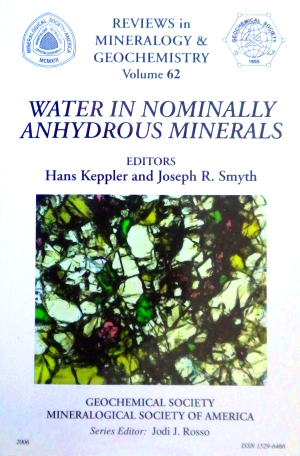
George R. Rossman
Division of Geological and
Planetary Sciences
California Institute of
Technology, Pasadena, CA 91125-2500,
U.S.A.
Under favorable conditions, namely a sharp band in a single orientation, just a few nanometers equivalent thickness of a hydroxyl species such as an amphibole can be detected in an otherwise anhydrous mineral such a pyroxene (Skogby et al. 1990). Routinely, detection limits of a few to tens of ppm wt of H2O in a mineral can be detected and often quantitatively determined. The overtone and combination modes of OH and H2O behave in predictable fashion in minerals (Rossman 1975) so that the two species can usually be separated from each other.
Infrared spectra, however easily obtained, are not rigorously self-calibrating, so independent methods of analysis have been necessary to calibrate the spectroscopic work. A couple general correlations of IR band intensity with the absorption energy have proven useful, if approximate. Various absolute hydrogen extraction methods have proven highly useful for purpose of rigorous calibration. More recently, nuclear methods that rely upon specific resonant reactions with the hydrogen nucleus or nuclear scattering specific to hydrogen have gained importance and have provided critical absolute calibrations of the infrared spectra. Secondary Ion Mass Spectroscopy (SIMS) for hydrogen is still in the early stages of development but once calibrated, and with established protocols, should play an ever-expanding role in the future. NanoSIMS promises to bring hydrogen analyses to ever finer spatial dimensions but will require significant effort before it can be regarded as an accurate analytical technique for small concentrations of hydrogen. The purpose of this chapter is to review the various methods that have been used to analyze hydrous components in the NAMs.
